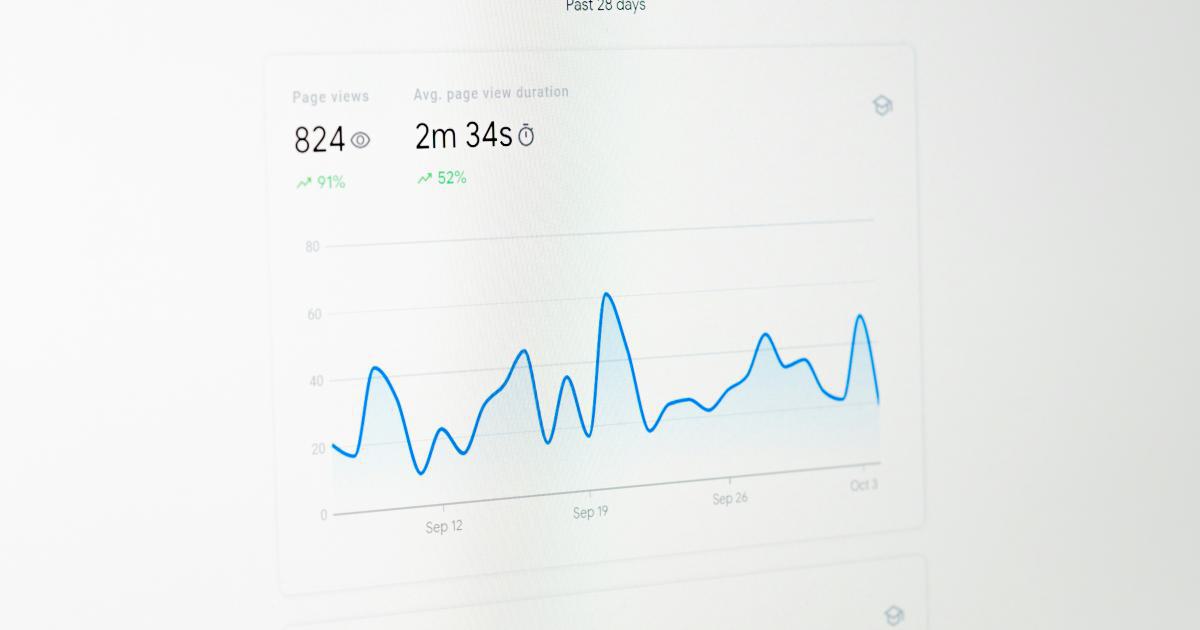Backlink Audits: A Comprehensive Guide for Beginners


Understanding the Importance of Backlink Audits
In the dynamic world of digital marketing, the significance of backlink audits cannot be overstated. Backlinks, or incoming links from other websites to your own, play a crucial role in search engine optimization (SEO) and the overall health of your online presence. A comprehensive backlink audit is an essential process that can reveal valuable insights, identify potential issues, and help you optimize your backlink profile for improved search engine rankings and online visibility.

Backlink audits are not just for experts - they are an essential tool for beginners navigating the complex world of SEO. By understanding the fundamentals of backlink audits, you can gain a competitive edge, identify and address potential problems, and leverage your backlink profile to drive more traffic, leads, and conversions to your website.
In this comprehensive guide, we will delve into the world of backlink audits, exploring the key components, best practices, and practical steps you can take to conduct a thorough audit and improve your backlink profile. Whether you're a small business owner, a digital marketer, or an SEO enthusiast, this guide will equip you with the knowledge and strategies you need to take control of your online success.
The Anatomy of a Backlink Audit
A backlink audit is a systematic examination of the links pointing to your website from other online sources. This process involves analyzing various aspects of your backlink profile, including the quality, relevance, and diversity of your backlinks, as well as identifying any potential issues or risks that may be affecting your website's SEO performance.
Understanding Backlink Quality
The quality of your backlinks is a critical factor in determining their impact on your SEO. High-quality backlinks from authoritative, relevant, and trustworthy websites can significantly boost your search engine rankings, while low-quality or spammy backlinks can actually harm your website's reputation and performance.
When evaluating the quality of your backlinks, consider factors such as:
- Domain Authority: The overall authority and credibility of the referring domain.
- Page Authority: The authority and relevance of the specific page linking to your site.
- Anchor Text: The text used to link to your website, which can impact the relevance and context of the link.
- Contextual Relevance: The relevance of the linking page's content to your own website's content.
- Nofollow vs. Dofollow: Whether the backlink is a "nofollow" link, which may have less SEO value than a "dofollow" link.

Understanding these factors will help you identify and prioritize high-quality backlinks that can drive meaningful improvements to your website's search engine rankings and overall online visibility.
Evaluating Backlink Relevance
In addition to the quality of your backlinks, the relevance of these links is also crucial. Backlinks from websites that are closely related to your industry, products, or services are generally more valuable than links from unrelated or irrelevant websites.
When assessing the relevance of your backlinks, consider the following:
- Industry Alignment: Is the referring website closely aligned with your industry or niche?
- Content Relevance: Does the content on the referring page relate to the content on your website?
- User Intent: Would the users visiting the referring website be interested in the content or offerings on your website?

Focusing on building relevant backlinks from authoritative, industry-related websites can significantly enhance the effectiveness of your backlink profile and improve your overall SEO performance.
Analyzing Backlink Diversity
The diversity of your backlink profile is another crucial factor to consider during a backlink audit. A diverse backlink profile, with links from a variety of different sources, is generally more beneficial than a profile dominated by a single type of backlink or a limited number of referring domains.
When evaluating the diversity of your backlink profile, consider the following:
- Referring Domains: The number of unique websites linking to your site.
- Backlink Types: The variety of backlink types, such as editorial links, directory listings, social media shares, and guest posts.
- Anchor Text Diversity: The range of anchor text used to link to your website, rather than an overreliance on a few specific keywords.
- Link Location: The placement of backlinks within the referring pages, such as within the main content, the sidebar, or the footer.

A diverse backlink profile can help your website appear more natural and authentic to search engines, ultimately leading to improved search engine rankings and a stronger online presence.
Conducting a Comprehensive Backlink Audit
Now that you understand the key components of a backlink audit, let's dive into the step-by-step process of conducting a thorough audit of your backlink profile.
Step 1: Gather Your Backlink Data
The first step in conducting a backlink audit is to gather all the data related to your website's backlinks. This can be done using a variety of tools, both free and paid, that provide detailed information about your backlink profile.
Some of the most popular and effective backlink analysis tools include:
- Google Search Console: Google's free webmaster tool that provides insights into your website's performance, including a list of your website's backlinks.
- Ahrefs: A comprehensive SEO tool that offers in-depth backlink analysis, including metrics like Domain Rating and URL Rating.
- Moz Link Explorer: A free backlink analysis tool that provides data on the quality and authority of your backlinks.
- Semrush: An all-in-one SEO platform that includes a robust backlink analysis feature.

Once you've selected your preferred tool(s), gather all the relevant data about your website's backlinks, including the referring domain, anchor text, link type, and any additional metrics provided by the tool.
Step 2: Analyze Your Backlink Profile
With your backlink data in hand, it's time to start analyzing the various components of your backlink profile. This involves assessing the quality, relevance, and diversity of your backlinks, as well as identifying any potential issues or risks.
Evaluate Backlink Quality
Begin by reviewing the quality of your backlinks. Look for metrics like Domain Authority, Page Authority, and spam score to identify high-quality, authoritative backlinks as well as any low-quality or potentially spammy links.

Assess Backlink Relevance
Next, assess the relevance of your backlinks. Determine whether the referring websites and their content are closely aligned with your own industry, products, or services. This will help you identify the most valuable, relevant backlinks in your profile.

Examine Backlink Diversity
Analyze the diversity of your backlink profile, looking at factors such as the number of referring domains, the variety of backlink types, and the diversity of anchor text used. This will help you identify any imbalances or areas for improvement.

Identify Potential Issues
As you analyze your backlink profile, be on the lookout for any potential issues or risks, such as:
- Toxic or spammy backlinks: Links from low-quality, irrelevant, or potentially harmful websites.
- Unnatural backlink patterns: An unnatural concentration of backlinks from a single source or an overreliance on specific anchor text.
- Negative SEO attacks: Attempts by competitors to harm your website's search engine rankings by building low-quality or toxic backlinks.

Identifying and addressing these issues is crucial for maintaining a healthy, high-performing backlink profile.
Step 3: Prioritize and Address Backlink Opportunities
Based on your backlink analysis, you can now prioritize and address the various opportunities and challenges within your backlink profile.
Prioritize High-Quality, Relevant Backlinks
Start by focusing on building and strengthening your high-quality, relevant backlinks. Reach out to the owners of the authoritative, industry-related websites linking to your site, and explore opportunities to further enhance these valuable connections.

Disavow Low-Quality or Toxic Backlinks
If your analysis has uncovered low-quality, spammy, or potentially harmful backlinks, it's important to take action to disavow these links. The Google Search Console provides a Disavow Tool that allows you to submit a list of backlinks you want Google to ignore when evaluating your website's overall link profile.

Diversify Your Backlink Profile
Aim to diversify your backlink profile by pursuing a wider range of backlink sources, such as guest posting, directory listings, social media shares, and other high-quality, relevant link-building strategies. This will help you create a more natural and balanced backlink profile.

Monitor and Maintain Your Backlink Profile
Ongoing monitoring and maintenance of your backlink profile is crucial for maintaining a healthy, high-performing website. Regularly review your backlink data, identify any new issues or opportunities, and take the necessary actions to keep your backlink profile in optimal condition.

By following these steps and addressing the various components of your backlink profile, you can effectively improve your website's search engine rankings, drive more targeted traffic, and ultimately achieve your digital marketing goals.
Leveraging Backlink Audit Insights for Improved SEO
The insights gained from a comprehensive backlink audit can be invaluable for enhancing your overall SEO strategy and improving your website's performance in search engine results.
Optimizing Content and On-Page SEO
By understanding the relevance and context of your backlinks, you can identify opportunities to optimize your website's content and on-page SEO elements. This may include:
- Aligning content with backlink topics: Ensure your website's content is closely aligned with the themes and topics of your high-quality, relevant backlinks.
- Adjusting anchor text: Optimize the anchor text used in your backlinks to improve the relevance and context of the links.
- Enhancing internal linking: Leverage your backlink insights to strengthen your internal linking structure and improve the flow of link equity throughout your website.

Identifying Link-Building Opportunities
A comprehensive backlink audit can also reveal valuable opportunities for building new, high-quality backlinks to your website. This may include:
- Prospecting for guest posting opportunities: Identify relevant industry blogs or publications that accept guest contributions and pitch content ideas.
- Pursuing directory listings: Explore reputable online directories that are relevant to your business or industry.
- Leveraging social media: Encourage your social media followers to share and engage with your content, which can lead to new backlink opportunities.
- Collaborating with influencers: Reach out to influential figures in your industry and explore opportunities for joint content creation or cross-promotion.

Enhancing Your Overall SEO Strategy
The insights gained from a backlink audit can also inform and enhance your overall SEO strategy. By understanding the strengths and weaknesses of your backlink profile, you can:
- Prioritize high-impact SEO initiatives: Focus your efforts on the areas that will have the greatest impact on your search engine rankings, such as improving content quality or building targeted backlinks.
- Align your strategy with search engine trends: Stay up-to-date with the latest search engine algorithm updates and best practices, and adjust your approach accordingly.
- Measure and track your progress: Continuously monitor your backlink profile and other SEO metrics to gauge the effectiveness of your efforts and make data-driven decisions.

By leveraging the insights from your backlink audit, you can create a more comprehensive, data-driven SEO strategy that delivers tangible results for your website or business.
Conclusion
Backlink audits are a crucial component of any successful SEO strategy, providing invaluable insights into the health and performance of your website's online presence. By understanding the importance of backlink quality, relevance, and diversity, and implementing a structured approach to conducting a comprehensive backlink audit, you can identify opportunities, address potential issues, and optimize your backlink profile for improved search engine rankings and increased website traffic.
Remember, a backlink audit is not a one-time event, but an ongoing process that requires regular monitoring and maintenance. Stay vigilant, continuously assess your backlink profile, and leverage the insights gained to enhance your overall SEO strategy and drive lasting success for your online business or digital marketing initiatives.
Are You Crushing It in Internet Marketing?
Struggling to boost your online visibility and traffic? Semrush is the ultimate platform for digital marketers like you. With powerful SEO tools and competitive data insights, you can optimize your website, content, and campaigns for maximum impact.
Join over 7 million marketers already using Semrush to outrank their competitors, drive more qualified leads, and grow their businesses online. Get started today with a 7-day free trial, and unlock the full potential of your internet marketing strategy.
Unlock the Power of SEO with Semrush
Are you struggling to boost your online visibility and drive more traffic to your website? Semrush has the solution.
Our comprehensive platform offers advanced keyword research, competitor analysis, and SEO audits, empowering you to optimize your content and outrank your competition.